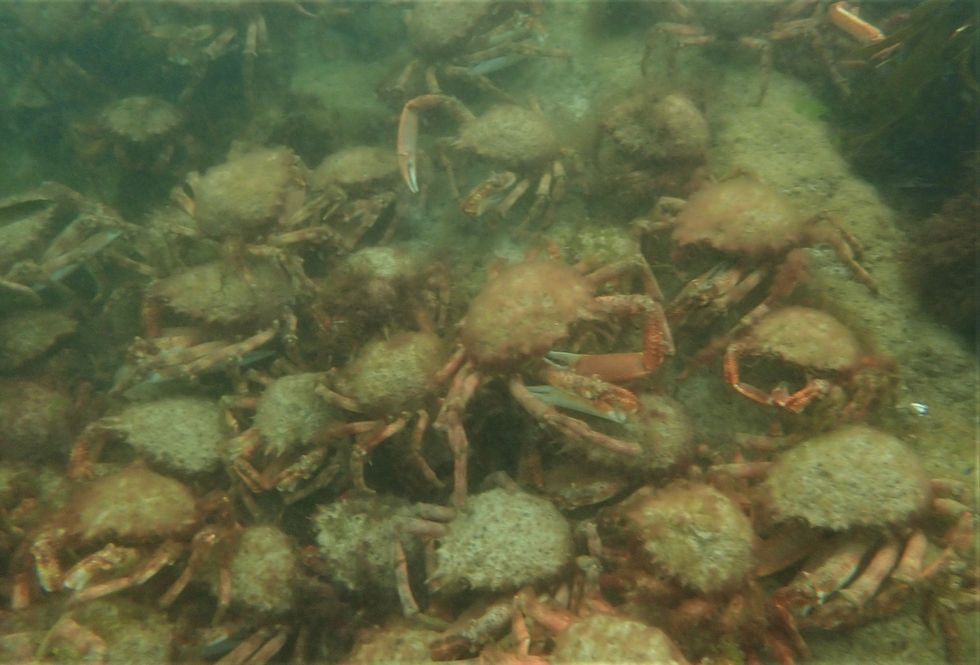
Thousands of spider crabs have gathered on the south coast of England in a spectacular natural phenomenon.
The rarely-witnessed event was filmed in knee-deep water just a few metres from a popular Falmouth beach at low tide.
The spectacle, which takes place annually between late summer and early autumn, involves crabs rallying together to protect themselves from predators.
This is because they are extremely vulnerable during the moulting process, as they crack open their exoskeletons and grow a new outer shell.
The mass aggregation of male crabs was filmed by Matt Slater, a marine conservation officer for the Cornwall Wildlife Trust.
“I have seen spider crabs on every dive and snorkel I have done for the past four years, but I have never seen a group as large as this,” he said.
“Looking down at the mass of crabs scuttling on the seabed was a truly incredible experience.
“Our seas are full of surprises – most locals would have no idea that one of the world’s great wildlife aggregations is occurring not too far from where they sleep.
“It goes to show how important our Cornish seas are and why we all need to look after them better.”
The formidable-looking spiny spider crab is a common species in Cornish waters, and is known for its characteristically long, spiny legs and claws which can span up to one metre.
Populations appear to have thrived in recent years as a direct result of climate change and warming sea temperatures.
Mr Slater added: “We hope this mass sighting is a sign that spider crab populations are healthy. We would love to know if there are more aggregations like this forming around the coast or if this is a one off.”















